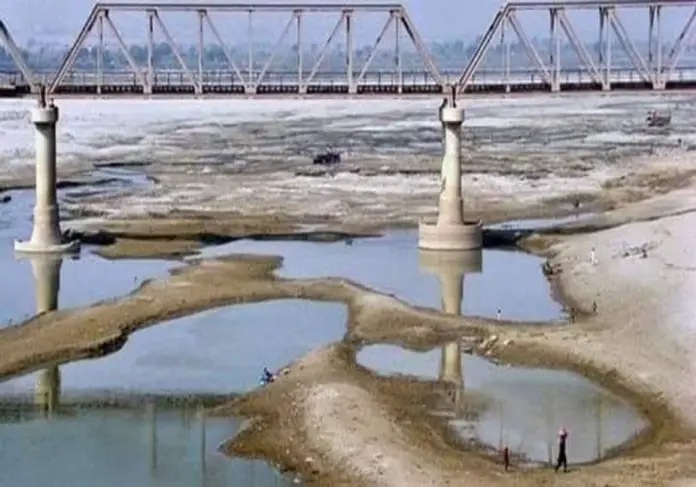Water shortage has reached 53 percent in Punjab and over 65 percent in Sindh, in a crisis the Indus River System Authority (IRSA) has termed historic in 22 years.
Farmers from southern districts of Punjab and Sindh told Minute Mirror on phone that their crops were almost dead due to unavailability of irrigation water.
“There is no water in canals and hours long loadshedding has created severe problems to irrigate the crops with tube-wells,” Umair Masood, the president of Pakistan Kissan Ittehad said.
He quoted a farmer from Badin whose paddy crops on five acres were completely destroyed due to unavailability of water. The ground water in the areas was salty, he added.
Punjab Irrigation Department on Thursday said the canal system of the province faced 53 percent shortage. Punjab presently needs 84,517 cusecs against the availability of 39,604 cusecs, it adds.
The need of water at Taunsa Barrage is 21,500 cusecs but the availability is a mere 8,404 cusecs, with 61 percent shortage. The shortages at Panjnad are 68 percent as it has mere 4,642 cusecs against the demand of 14,650 cusecs. Trimmu Barrage is getting 10,700 cusecs against the need of 16,700 cusecs with shortage touching 36 percent.
The Lower Bahawal Canal which irrigates Bahawalpur area is facing 65 percent shortages, according to Irrigation Department. The canal carries mere 1,800 cusecs water against the need of 5,062 cusecs. Melsi Canal, dedicated for Lodhran district area, faces 56 percent shortages. Its flows are a mere 1,692 cusecs against the need of 4,505 cusecs. The shortages at Sulemanki Barrage are 51 percent, Islam Barrage 45 percent and Baloki 36 percent.
IRSA said the overall deficit at dams and rivers was 38 percent. According to the authority, Tarbela (Sindh River) is facing 13 percent shortage, Kabul River 46 percent and the shortage at Mangla Dam (River Jehlum) is 44 percent. At River Chenab, as per IRSA, shortages are touching 48 percent.
The position of the river inflows and outflows at Tarbela, Mangla and Chashma along with the reservoirs levels and the barrages, as per Water and Power Development Authority, on Thursday is as under:
Rivers
Indus at Tarbela: Inflows 90,600 cusecs and Outflows 85,000 cusecs; Kabul at Nowshera: Inflows 37,100 cusecs and Outflows 37,100 cusecs, Jhelum at Mangla: Inflows 36,400 cusecs and Outflows 33,200 cusecs, Chenab at Marala: Inflows 27,000 cusecs and Outflows 19,100 cusecs.
Barrages
Jinnah: Inflows 91,700 cusecs and Outflows 85,200 cusecs; Chashma: Inflows 102,000 cusecs and Outflows 91,000 cusecs; Taunsa: Inflows 73,100 cusecs and Outflows 64,700 cusecs; Panjnad: Inflows 4,600 cusecs and Outflows Nil cusecs, Sukkur: Inflows 31,000 cusecs and Outflows 11,200 cusecs; Kotri: Inflows 5,100 cusecs and Outflows 100 cusecs.
Reservoirs (Level and Storage)
Tarbela: Minimum operating level 1,392 feet, present level 1411.37 feet, maximum conservation level 1,550 feet, live storage today 0.195 million acre feet (MAF).
Mangla: Minimum operating level 1,050 feet, present level 1082.65 feet, maximum conservation level 1,242 feet, live storage today 0.165 MAF.
Chashma: Minimum operating level 638.15 feet, present level 643.40 feet, maximum conservation level 649 feet, live storage today 0.087 MAF.
The inflows and outflows of River Indus at Tarbela, Jinnah and Chashma, River Kabul at Nowshera and River Jhelum at Mangla have been reflected as mean flows of 24 hours, whereas the other flows have been gauged at 6:00am.







